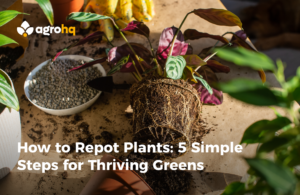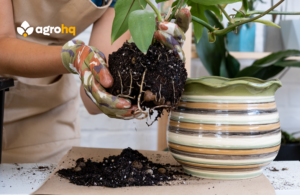Repotting plants is an essential skill for any plant parent. Over time, your plants outgrow their pots, roots become bound, and the soil loses nutrients. Learning how to repot plants ensures they stay healthy, grow strong, and thrive in their environment. Whether you’re a seasoned gardener or a newbie, this guide will walk you through the process step-by-step while highlighting the benefits of repotting.

How to Repot Plants:
Why You Need to Learn How to Repot Plants
Repotting isn’t just about aesthetics—it’s about your plant’s overall health. Plants often suffer in small pots where their roots are cramped, leading to stunted growth. Repotting provides them with more space, fresh soil, and renewed nutrients, ensuring optimal growth and development. Additionally, it helps prevent root rot and improves water drainage.
Tools You’ll Need to Repot Plants
Before diving into the process, gather these essential tools:
- A new pot (choose one that’s 1–2 inches larger than the current one).
- Fresh potting soil appropriate for your plant type.
- Gloves to protect your hands.
- A trowel or small gardening tool for loosening the soil.
- Watering can for post-repotting care.
Step-by-Step Guide on How to Repot Plants
- Choose the Right Pot
Select a pot that’s slightly larger than the current one. Ensure it has drainage holes to prevent waterlogging. - Loosen the Roots
Carefully remove the plant from its current pot. Gently shake off excess soil and untangle any bound roots. If the roots are tightly wound, trim them slightly. - Prepare the New Pot
Add a layer of fresh soil at the bottom of the new pot. This acts as a cushion for the roots. - Place the Plant
Position the plant in the center of the pot. Fill in the gaps with fresh soil, ensuring the plant is stable and upright. Avoid over-packing the soil to allow proper airflow to the roots. - Water Thoroughly
Once repotted, water the plant generously to help the soil settle. Ensure excess water drains out. Place the plant in a spot with adequate light and monitor it for the first few days.
Common Mistakes to Avoid When Repotting Plants
- Overwatering After Repotting
Newly repotted plants are sensitive. Overwatering can lead to root rot. Allow the soil to dry slightly between watering. - Choosing the Wrong Pot Size
Avoid pots that are too large, as they can retain excess moisture, causing root issues. - Not Refreshing the Soil
Always use fresh potting soil. Reusing old soil deprives your plant of essential nutrients. - Skipping Root Pruning
Leaving bound roots untouched can hinder plant growth. Gently untangle or trim them during repotting.
How Often Should You Repot Your Plants?
The frequency of repotting depends on the plant type. On average:
- Fast-growing plants: Repot every 12–18 months.
- Slow-growing plants: Repot every 2–3 years.
Signs your plant needs repotting include roots growing out of drainage holes, stunted growth, or soil that dries out too quickly.
The Benefits of Repotting Plants
Repotting does wonders for your plants. It:
- Encourages healthy root growth.
- Provides better nutrient absorption with fresh soil.
- Improves water drainage and prevents root rot.
- Gives your plants more room to grow and thrive.
Final Thoughts
Knowing how to repot plants is a game-changer for any plant enthusiast. By following these steps and avoiding common mistakes, you’ll create a healthy environment for your greens to flourish. So, roll up your sleeves and give your plants the care they deserve!
If you found this guide helpful, share it with fellow plant lovers or drop a comment about your favorite repotting tips!
See More on Plant Care here: Tips to Keep Your Indoor Plants Green and Thriving 🌱
Follow us on our Linkedin Page:Linkedin